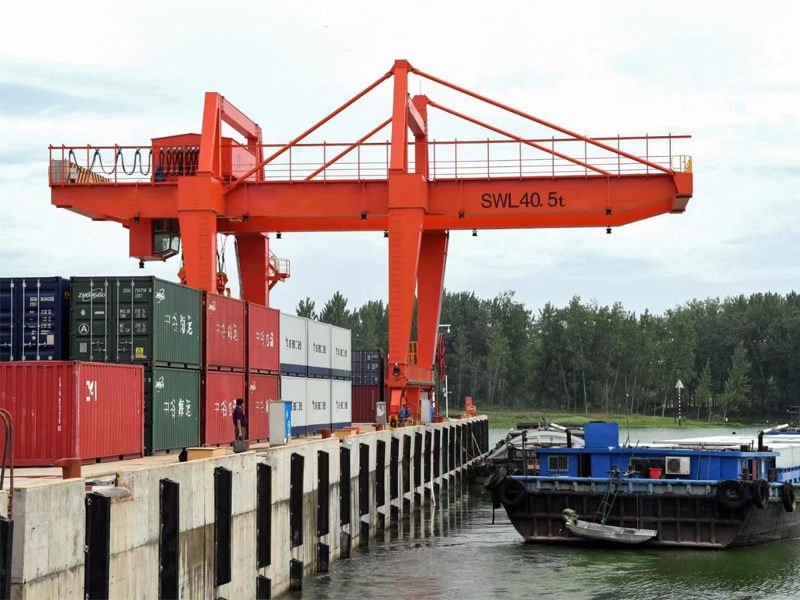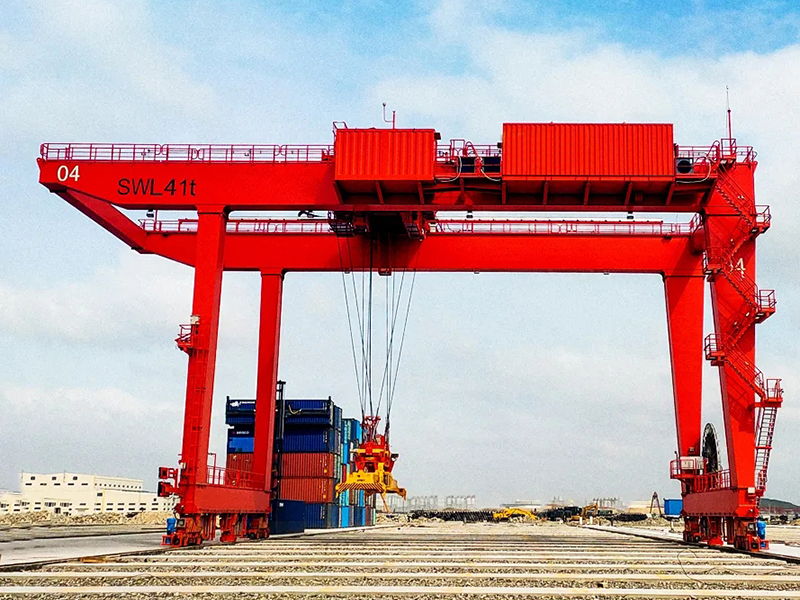Installing a rail mounted crane is a complex and critical task that requires careful planning, precise execution, and adherence to safety protocols. rail mounted cranes, also known as gantry cranes, are commonly used in various industries for lifting and moving heavy loads in fixed locations, such as manufacturing facilities, warehouses, and shipyards. Proper installation is essential to ensure the crane’s stability, functionality, and safety throughout its operational lifespan. In this comprehensive guide, we’ll explore the key tips and considerations for installing a rail mounted crane safely and effectively.

Conduct Site Assessment
Before beginning the installation process, conduct a thorough assessment of the site where the rail mounted crane will be installed. Evaluate the ground conditions, including soil stability, slope, and drainage, to ensure that the crane’s support structure can be securely anchored to the ground.
Identify any overhead obstacles, such as power lines, buildings, or other structures, that may interfere with the crane’s movement or pose a risk of contact during operation. Determine the optimal location for installing the crane to maximize efficiency and minimize interference with other operations or equipment in the facility.
Obtain Necessary Permits and Approvals
Depending on local regulations and jurisdictional requirements, installing a rail mounted gantry crane may require obtaining permits, approvals, and inspections from relevant authorities. Consult with local building codes, zoning regulations, and safety standards to ensure compliance with all applicable requirements.
Obtain permits for construction activities, such as excavation, foundation pouring, and crane installation, as needed. Schedule inspections with regulatory agencies to verify that the installation meets all safety and structural requirements before commissioning the crane for operation.
Prepare Foundation and Infrastructure
The foundation is a critical component of the rail mounted crane’s support structure and must be carefully designed and constructed to withstand the crane’s weight and operational loads. Excavate the foundation area to the specified depth and dimensions, ensuring that the soil is properly compacted and leveled.
Pour concrete into the foundation pit and reinforce it with steel rebar or mesh to enhance structural integrity and stability. Allow sufficient time for the concrete to cure and harden before proceeding with crane installation.
Install rail tracks or beams on the foundation to provide a stable and level surface for mounting the crane’s wheels or bogies. Ensure that the rails are properly aligned and securely fastened to prevent movement or misalignment during crane operation.

Assemble Crane Components
Before installing the rail mounted crane on the foundation, assemble the crane’s components, including the gantry structure, trolley, hoist, and electrical systems, according to the manufacturer specifications and guidelines. Ensure that all components are properly aligned, connected, and secured to prevent issues during installation.
Inspect the crane components for any signs of damage, defects, or missing parts, and address any issues promptly to avoid delays or complications during installation. Verify that all electrical connections, wiring, and control systems are functioning correctly and meet safety standards.
Position and Secure Gantry Structure
Carefully position the gantry structure on the rail tracks or beams, ensuring that it is aligned with the foundation and levelled properly. Use leveling shims or adjustable supports as needed to achieve the desired position and orientation of the crane.
Secure the gantry structure to the foundation using anchor bolts or anchor plates, ensuring that they are tightened to the specified torque requirements. Verify that the gantry structure is stable and securely anchored to the foundation to prevent movement or instability during crane operation.
Install Electrical and Control Systems
Once the gantry structure is in place, install the crane’s electrical and control systems, including power supply cables, control panels, limit switches, and safety devices. Follow the manufacturer’s wiring diagrams and installation instructions to ensure proper connection and functionality.
Test the electrical and control systems to verify that all components are functioning correctly and that the crane operates smoothly and safely. Conduct a comprehensive inspection of the electrical wiring and components to identify any potential issues or deficiencies and address them promptly.
Commission and Test Crane Operation
After completing the installation process, commission the rail mounted crane for operation by performing a series of functional tests and inspections. Verify that all heavy duty crane components, including the hoist, trolley, brakes, and safety devices, are operating as intended and meet safety standards.
Conduct load tests to evaluate the crane’s lifting capacity and performance under simulated working conditions. Gradually increase the load to the crane’s rated capacity while monitoring its stability, alignment, and structural integrity.
Ensure that crane operators are properly trained and familiarized with the crane’s controls, operating procedures, and safety protocols before commencing regular operations. Provide ongoing training and support to operators to ensure safe and efficient crane operation throughout its operational lifespan.
In conclusion, installing a rail mounted crane requires careful planning, preparation, and execution to ensure safe and effective operation. By following the tips and considerations outlined in this guide and adhering to industry best practices and safety standards, installers can ensure that the crane is installed correctly, functions reliably, and meets the needs of the facility or operation.